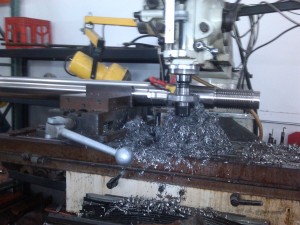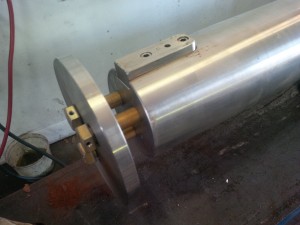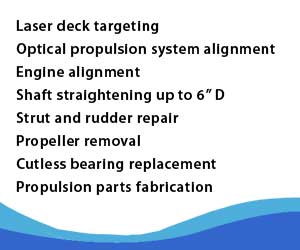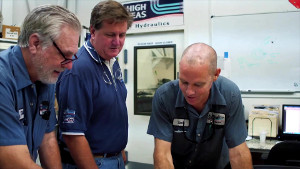Maintaining High Performance through Routine Maintenance
A 100 foot Marlow yacht was recently hauled at Lauderdale Marine Center for routine maintenance that included her running gear, hydraulics, topside paint and other services. The captain turned to High Seas Yacht Service for the ship’s running gear work and our sister company, High Seas Hydraulics for the hydraulic portion.
During the inspection of the bearings and seals, we found that the shafts were deeply pitted to the point that we could not fix them through a cladding or weld-over process. New shafts would need to be fabricated. To make the new shafts, were turned to Straight Line Marine, our full service machine shop dedicated to shaft, strut and rudder straightening for precision alignments and the elimination of running gear vibration. At Straight Line Marine, we can straighten or fabricate shafts up to 6 inches in diameter and perform shaft weld-overs (cladding). We are ABS Certified for Aquamet Stainless Steel Shaft Cladding. We also perform ABS shaft crack testing and straightening.
For this yacht, we needed to make 4” diameter shafts starting with sourcing the raw materials, machining the right coupler taper and the threading on the propeller end of the shaft. We also had to machine the new key way for the
shaft.
As is common in many boats, this one used a coupler nut attachment with one big nut on the coupler end in the engine room. The nut that was used would be similar to a propeller nut. Since the coupler nut is usually recessed into the coupler, it takes a very large socket to tighten or loosen it. In order to perform the work, we would have to make custom sockets that would fit on a 1” wrench and then, because of the amount of torque required, put a 3 foot long pipe on the wrench to get the leverage. Because this work is happening in a very tight place, we found that we do not have enough room to swing a long pipe or get the socket in place.
A more modern approach is the keeper plate or shaft locking plate. The end of the shaft is cut flush, drilled and tapped for much smaller bolts. Three ¾” hardened bolts are torqued down in a circle to draw the plate and coupler onto the shaft taper. A common ¾” socket can be used on a regular ½” or ¾” wrench. We no longer needed long cheater pipes since the torque required to draw up the plate is considerably less than that required on one big nut.
This yacht now sports brand new shafts and is ready for smooth sailing.





 Click to watch the video of a day at High Seas Yacht Service.
Click to watch the video of a day at High Seas Yacht Service. Click to watch Marine Industries Association of South Florida video featuring Salty Jobs at High Seas Services.
Click to watch Marine Industries Association of South Florida video featuring Salty Jobs at High Seas Services.
Comments are closed.